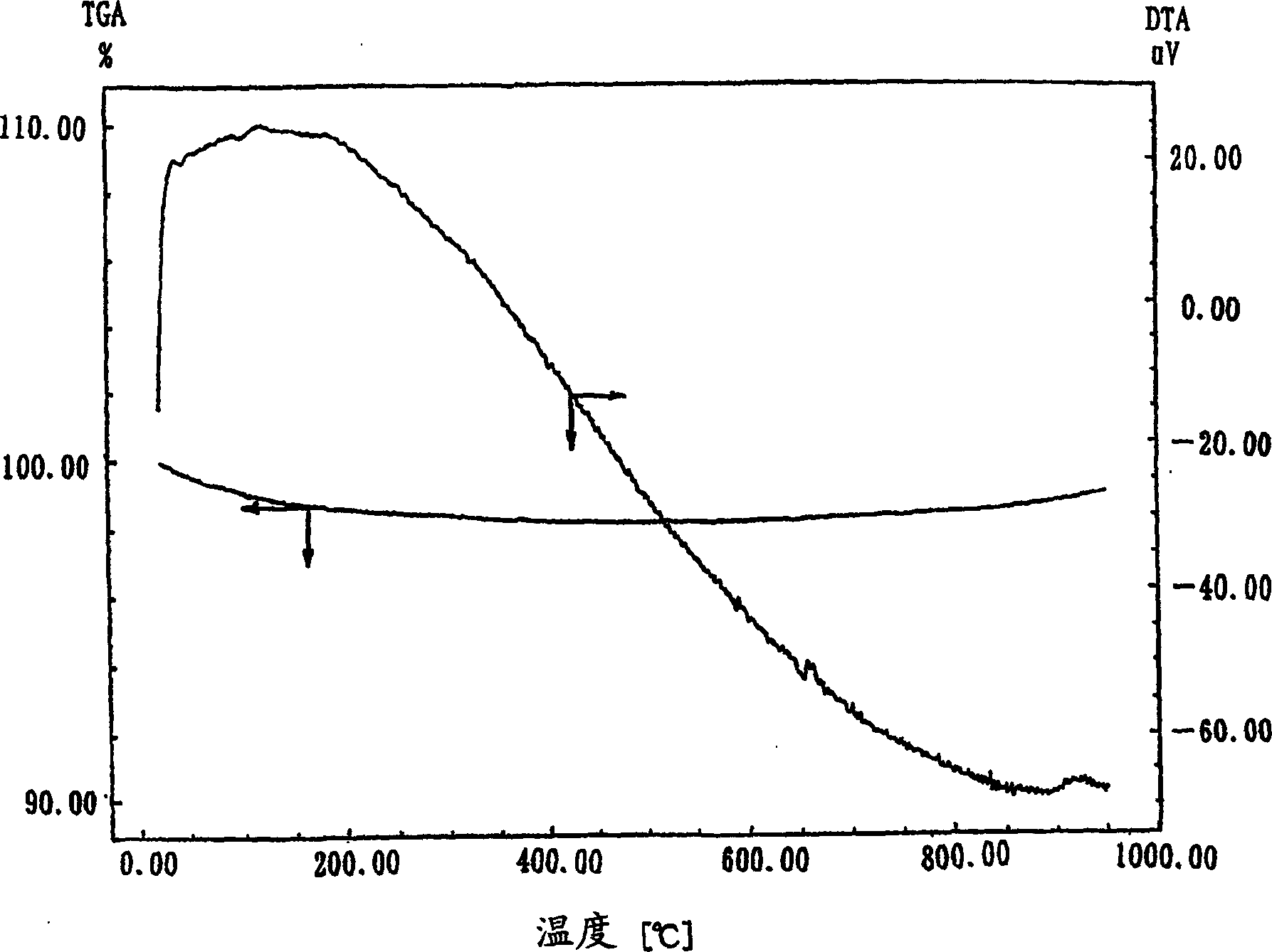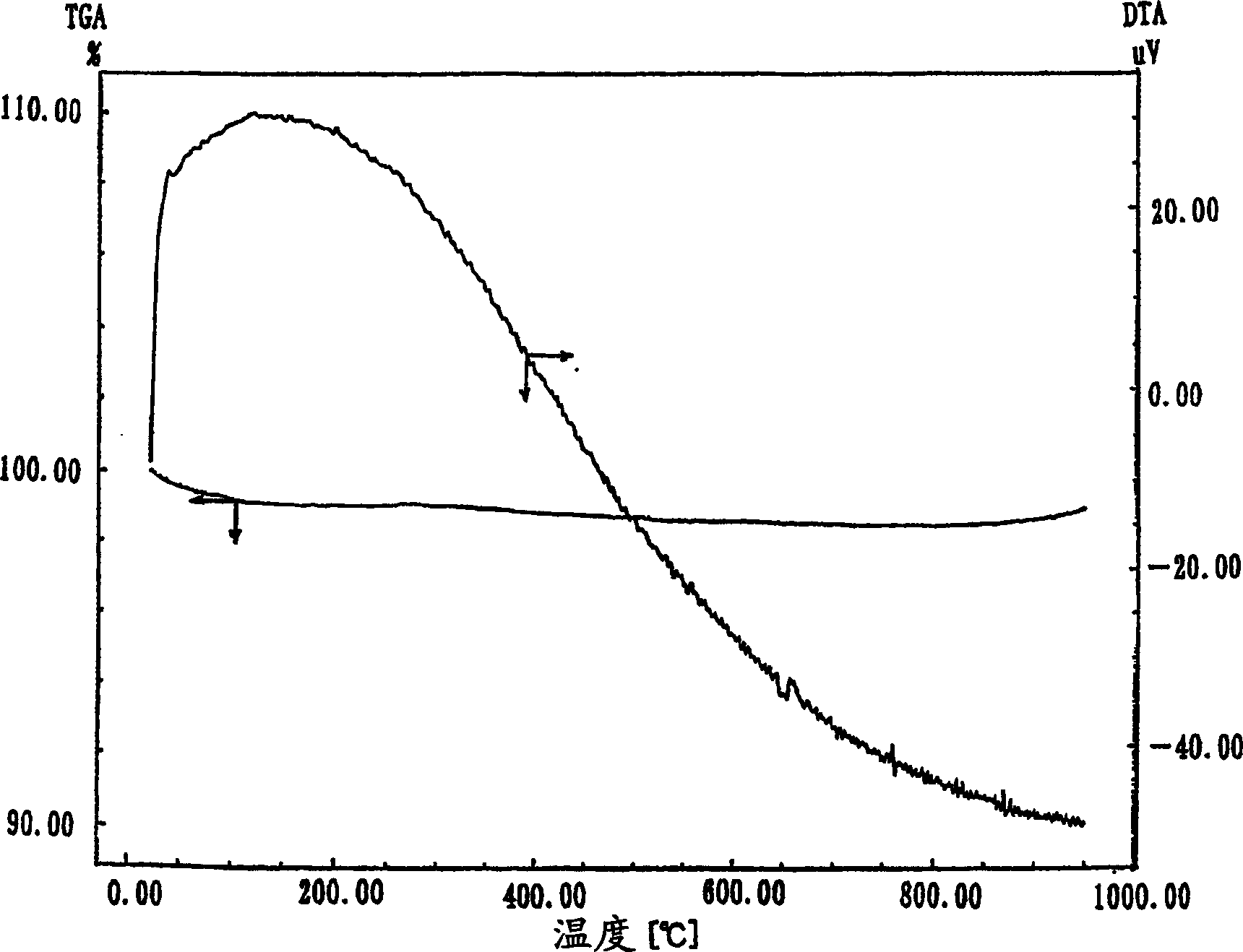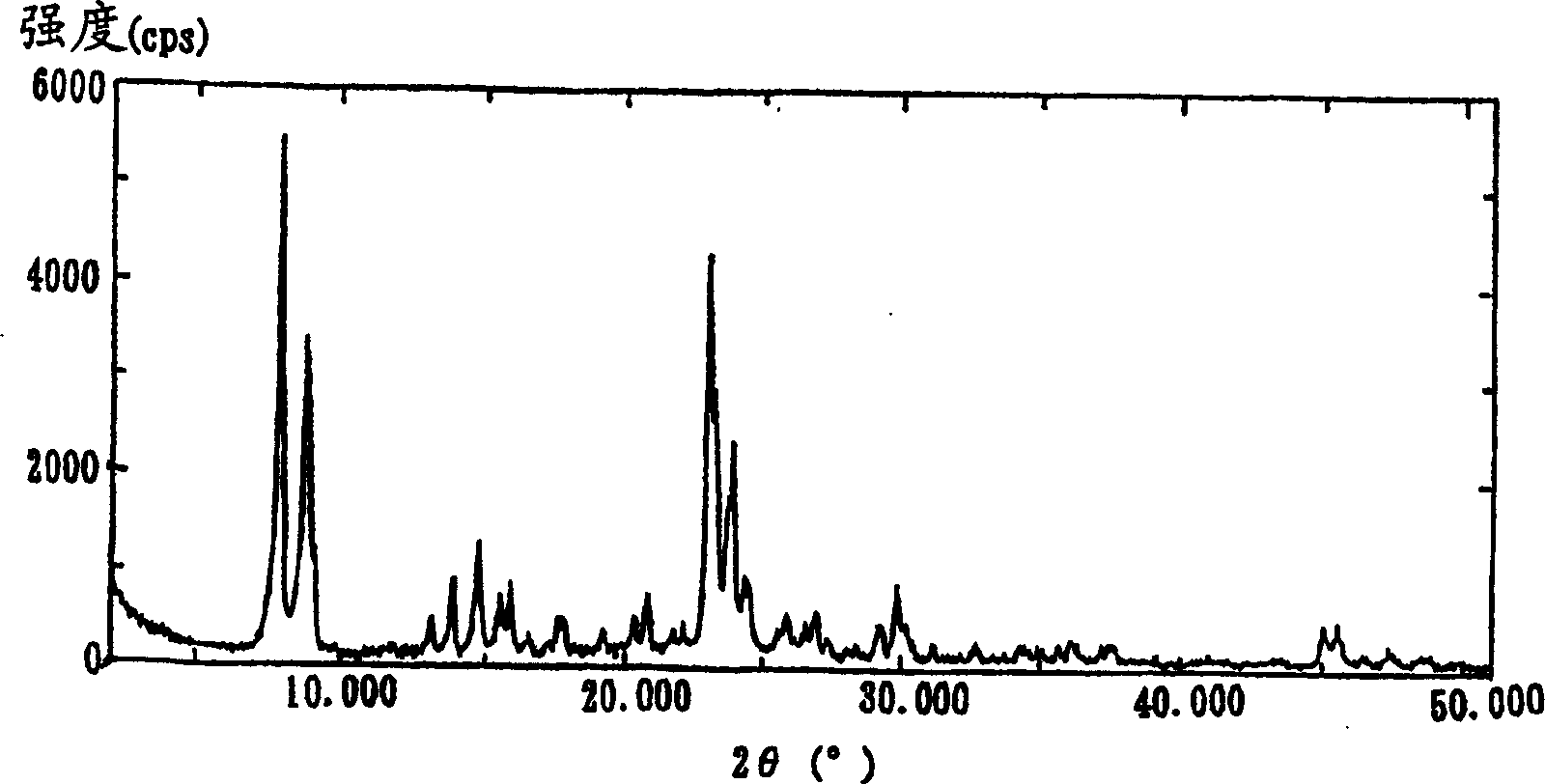Method for preparing hollow nanofiber, hollow nanofiber and catalyst composition for preparing hollow nanofiber
A technology of nanofibers and compounds, applied in the field of hollow nanometers, which can solve the problems of difficult control of carbon nanotube diameter, inability to control the size, etc.
- Summary
- Abstract
- Description
- Claims
- Application Information
AI Technical Summary
Problems solved by technology
Method used
Image
Examples
Embodiment 1
[0173] [Synthesis of heat-resistant zeolite]
[0174] 164 g of distilled water were added to 18.9 g of piperazine hexahydrate (manufactured by Aldrich) and 5.2 g of tetrapropylammonium bromide (manufactured by Aldrich), and stirred. Stir while heating until dissolved. Further, 11.7 g of wet silica (manufactured by Aldrich) was added thereto, and heated to 80° C. to obtain a transparent aqueous solution. This was added to a Teflon-lined autoclave and heated at 150°C for 5 days. After that, it is cooled, filtered, washed with water, dried, and then baked at 550°C in air.
[0175] The X-ray diffraction (XRD) measurement of the obtained powder revealed that it was silicalite-1 having an MFI structure. With the thermal analysis device DTG-50 that Shimadzu Corporation manufactures, this powder is heated to 900 ℃ with the rate of temperature rise of 5 ℃ / min in the nitrogen flow of 50ml / min, and exothermic peak does not appear in the DTA curve ( figure 1 ).
[0176] [Metal salt att...
Embodiment 2
[0184] [Heat resistance of crystalline titanium silicate]
[0185] The X-ray diffraction (XRD) measurement of titanium silicate powder (Si / Ti ratio: 50) purchased from Eno-Chem Kitat Co., Ltd. revealed that it was TS-1 having an MFI structure. With the thermal analysis device DTG-50 that Shimadzu Corporation manufactures, this powder is heated to 900 ℃ with the rate of temperature rise of 5 ℃ / min in the nitrogen flow of 50ml / min, and exothermic peak does not appear in the DTA curve ( figure 2 ).
[0186] This zeolite was calcined at 900° C. for 30 minutes, and then carried out XRD diffraction, then the peak of MFI type zeolite remained ( image 3 ).
[0187] [Metal salt attached to heat-resistant zeolite]
[0188] 0.08 g of ferrous acetate (manufactured by Aldrich) and 0.11 g of cobalt acetate 4 hydrate (manufactured by Nacalaitesque) were added to 7 ml of methanol (manufactured by Nacalaitesque), and suspended for 10 minutes using an ultrasonic cleaner. 1.0 g of the abov...
Embodiment 3、4
[0219] Embodiment 3, 4, comparative example 2
[0220] Using a thermal analysis device DTG-50 manufactured by Shimadzu Corporation, the zeolite HSZ-390HUA (designated as zeolite 1) prepared by Tosoh was heated to 900°C at a heating rate of 5°C / min in a nitrogen flow of 50ml / min. , resulting in an exothermic peak in the DTA curve ( Figure 11 ).
[0221] The zeolite was roasted at 900° C. for 30 minutes in dry air, and then it was measured by XRD. As a result, the structure of the Y-type zeolite was maintained, but the peak became steeper and larger than that before roasting (XRD before roasting: Figure 13 , XRD after roasting: Figure 14 ). It is believed that some structural changes occurred during the temperature increase to 900°C.
[0222] Using a thermal analysis device DTG-50 manufactured by Shimadzu Corporation, heat zeolite HSZ-390HUA (designated as zeolite 2) at 900°C for 30 minutes in a nitrogen flow of 50ml / min at a heating rate of 5°C / min to 900°C, the result ...
PUM
| Property | Measurement | Unit |
|---|---|---|
| thickness | aaaaa | aaaaa |
| diameter | aaaaa | aaaaa |
| diameter | aaaaa | aaaaa |
Abstract
Description
Claims
Application Information
 Login to View More
Login to View More - R&D
- Intellectual Property
- Life Sciences
- Materials
- Tech Scout
- Unparalleled Data Quality
- Higher Quality Content
- 60% Fewer Hallucinations
Browse by: Latest US Patents, China's latest patents, Technical Efficacy Thesaurus, Application Domain, Technology Topic, Popular Technical Reports.
© 2025 PatSnap. All rights reserved.Legal|Privacy policy|Modern Slavery Act Transparency Statement|Sitemap|About US| Contact US: help@patsnap.com



